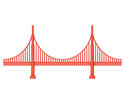
Can American government help solve the big problems facing society?
Problems such as the lack of affordable housing, persistently low levels of reading achievement among U.S. students, and climate change?
Why is the political demand for problem-solving among the public, organized groups and other actors often lower than socially optimal?
How has the problem-solving capacity of key governing institutions — such as Congress and the bureaucracy — changed over time?
Despite their importance, these questions have received only limited attention from political scientists in recent years. To take stock of what we know (and have yet to learn) about the politics of problem solving, Yale’s Institution for Social and Policy Studies invited leading scholars to prepare issue briefs on the topic. The issue briefs were originally presented at a conference sponsored by ISPS’s Democratic Innovations program and organized by ISPS Director Alan Gerber and Eric Patashnik, Julis-Rabinowitz Professor of Public Policy and Political Science at Brown University.
Read a summary of the conference.
The issue briefs address common themes and questions, such as distinguishing problem solving from other styles of policymaking, the measurement of government performance, the relationship between media attention and problem solving, electoral and other incentives for problem solving, and the role of crises in mobilizing resources for problem solving activity.
WORKING PAPERS
|
|
Are Democracies Better at Solving Problems Than Non-Democratic Regimes? Bryan Jones, University of Texas at Austin Are democracies better at solving problems than non-democratic regimes? If so, what elements of democracies make them better? How do different political systems monitor and manage problems that are long-term? In this paper I sketch the issues in making such comparisons, and report some of the major findings at present. Then I point to possible directions for making those comparisons by linking components of the problem-solving paradigm to specific elements of democratic institutions and governance. |
 |
The Politics of Problem Solving: Housing, Pensions, and the Organization of Interests Sarah F. Anzia, University of California, Berkeley Good governance and effective problem solving are important goals for American government, and one branch of political science that focuses on them is research on the politics of public policy. This brief summarizes important insights from that literature and illustrates their relevance to two problems: housing unaffordability and public pension underfunding. With housing unaffordability, problem-solving politics is currently activated, whereas with pension underfunding, it is not. To understand why, it is important to consider the features of the policy, the organization of interests, and the politics of problem creation. In the problem-creation stage, the two cases share much in common: they feature lopsided interest structures buttressed by longstanding institutions. But for the activation of problem-solving politics and what problem solving looks like, there are meaningful differences between the two. One difference relates to how the problems are experienced by the broader public. The other is that in one of the cases, the side with vested interest in the status quo is a well-organized interest group. In both cases, problem-solvers tend to emerge from political offices with broader constituencies: state-level offices for housing, and executives (governors and mayors) for pensions. |
 |
Heuristic Agenda Closure in Administrative Government Daniel Carpenter, Harvard University Agenda-setting shapes the problems that occupy the sustained attention of those who craft laws and policy, and the heuristics and solutions used to address those problems. An extensive political science literature has elucidated agenda formation, concluding that (1) policy change happens under the conjuncture of solution streams and policy streams (given a structure or moment of political opportunity), and (2) “there is an impressive congruence between the priorities of the public and the priorities of Congress across time” (Jones and Baumgartner 2004), conditioned upon wider legislative agendas than those for the public. I contend here that the rise of administrative government qualifies these conclusions. That delegation trades off expertise for agency preferences is well known, but it also embeds a second trade-off: between a forum with more open agendas (the legislature) and one that restricts them (administration). Indeed, delegation to administrative agencies presumes, if it does not favor, agenda closure – a tightly constrained focus on a limited set of issues to which the legislature has entrusted the agency’s authority and resources, and a narrow set of methods and consiliaria (experts, lawyers, adversaries, commenters) from which the agency seeks and gets its information. Agenda limitation may be desirable but may also worsen the quality of public problem solving, and agenda democracy itself may be normatively desirable. This tension is ineluctable. Hypothetically, it might be ameliorated by (a) the development and embedment of greater expertise in law-making assemblies and/or (b) the restriction or deliberative aperture (or both) of administrative policymaking. |
|
Congress as Problem Solver: Building Consensus Despite Polarization James M. Curry, University of Utah Frances E. Lee, Princeton University We examine the contributions Congress makes to problem solving in contemporary American government. We offer a more positive assessment of the institution than is the norm for political science. In terms of representation, institutional processes, and policy outcomes, Congress functions better than is generally appreciated. Its membership and party composition do a credible job reflecting the political diversity that exists in the country, and its institutional processes show respect for that diversity. Most importantly, Congress’s policy outcomes reliably command broad support across party lines. Amid the intense polarization of contemporary American politics, Congress routinely arrives at results that large majorities and both parties support. |
|
 |
The Civil Service as a Problem-Solving Institution Donald Moynihan, University of Michigan This paper considers the capacity of the civil service to engage in learning and problem-solving. While public employees are (sometimes justly) critiqued for their inability to learn and adapt, I review two examples of problem-solving that have been institutionalized into the United States federal government: performance management and reducing administrative burdens. Drawing on those examples and broader research I offer a number of observations about problem-solving. Government needs to do a better job of hiring problem-solvers, and then shielding them from the twin threats of proceduralism and politicization. While unflashy and incremental, a model of problem-solving that focuses on embedding an ethos of change into organizational routines is more likely to have lasting effect than top-down reforms that feel distant from the day-to-day work of civil servants. |
 |
Congressional Fundraising Dynamics and Their Implications for Problem-Solving Brandice Canes-Wrone, Stanford University A major development in the modern Congress is the increased centrality of fundraising. Although raising money has long been a component of members’ responsibilities, until recently it was a more moderate one. As this issue brief describes, numerous factors have contributed to the development, including the reduced role of seniority in determining committee positions, the rise of the internet as a medium through which challengers can raise funds from out-of-district donors, and reforms to campaign finance law that have handicapped parties’ ability to serve as the dominant fundraising organizations. These changes, individually and in combination, have been quite detrimental to congressional problem-solving. The increased amount of time needed for fundraising means that members have less time for problem-solving; donor opinion has an outsized impact on members’ policy behavior; and the types of members and candidates who are interested in problem-solving are now less willing to run for office. The issue brief concludes by offering potential reforms to the campaign finance system and congressional rules that would better incentivize problem-solving in the contemporary Congress as well as suggestions for future research that would help us better understand the current dynamics. |
|
Reflections on Government Success and Failure Lawrence Rothenberg, University of Rochester This discussion offers a survey of changes in the world that might impact the ability to solve policy problems as outlined initially in Glazer and Rothenberg (2001). While the basic premises of the original analysis hold, interrelated political and economic changes have occurred in ways that would produce a far different monograph than was authored roughly a quarter-century ago. Politically, four changes are highlighted: (1) polarization, (2) private politics, (3) globalization, and (4) media diversification. Economically, three notable features are also discussed: (1) industrial organization; (2) supply and value chains; and (3) artificial intelligence. While no universal statement can be offered, changes in these features, both individually and interactively, provide additional opportunities and new obstacles for policy successes to be realized. |
|
 |
Problem-Solving Criminal Justice Steven Teles, Johns Hopkins University Criminal justice reform went through a prolonged period of what we might think of as “problem-solving politics” from the mid-2000s to the late 2010s. In this period, there was a widespread focus on passing measures that reduced the scale of incarceration while not increasing violent crime. There were two key structural factors behind this shift to a problem-solving mode of criminal justice reform. First, the lowered salience of the issue among the general public, and the way that key activists and organizations actively sought lower-salience venues for policymaking, facilitated repeated, incremental reforms in conservative states. Second, diminished polarization around criminal justice was a function of the increasing salience of libertarian ideas on the right in the 2010s, as well as the specifically trans-partisan strategies of activists and funders. A close analysis of the politics of the politics of criminal justice reform from the mid-2000s to the late 2010s shows that the scope of problem-solving politics is limited by features of the larger political contexts over which activists, intellectuals and experts have little influence. That said, the potential for at least some problem-solving policymaking is always present, even where higher political salience makes it challenging. However, policy entrepreneurs may need to be flexible about the specific problems that can be solved at any one period. But it may be possible even in relatively less problem-solving periods to engage in “political investments” that will bear fruit in later periods. |
 |
Alan S. Gerber, Yale University
Eric Patashnik, Brown University
The essay identifies factors on both the demand- and supply-sides of the political market that constrain problem-solving in modern American government in sectors such as education, healthcare and housing. These factors include the lack of incentives for policy entrepreneurship to generate demand among voters and mass publics for good public policy; the belief of highly influential economic elites that they are insulated from many of the problems affecting everyday citizens; the power of concentrated interests; partisan polarization; missing state capacity; cultural differences between academia and government that impede knowledge transfer; and a misalignment between the behavior of professional groups and the public interest. |